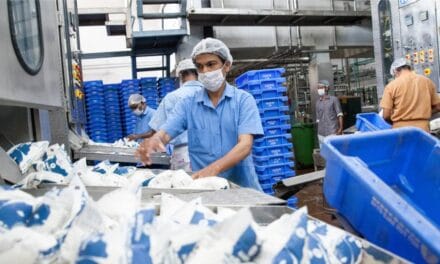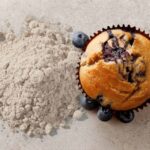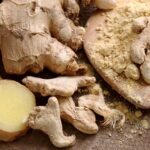Milk is a treasure house of about 2000 ingredients. Value addition to milk products would provide health benefits to consumers and improve the economic scale ofthe dairy industry. Indian dairy industry must seize the opportunity and gainfully exploit the highly dynamic, exciting, and promising future in the field of value-added milk products, write M.K. Sanyal, S.K. Gangopadhyay, and S.C. Paul.
Table of Contents
Value addition to milk products is an age-old practice in India. Most of our traditional milk products. Many value-added functional dairy foods are designed to reduce the risk of diseases, manage disease conditions, and promote consumer health. Some Western countries are already marketing a variety of foods incorporating specific health-promoting factors and food ingredients derived from the fractionation of milk using emerging technologies such as ultrafiltration, diafiltration, microfiltration, nanofiltration, reverse osmosis, and fat fractionation, among others.
Enrichment with Milk Fractions
Milk products incorporated with specific milk fractions – commonly known as functional dairy foods – provide nutrition as well as health benefits. They are also referred to as nutraceuticals, health foods, medical foods, pharma foods, refreshing foods, bio foods, designer foods, performance foods, mood-elevating foods, and supplements.
Milk proteins prove to be better than plant proteins in terms of quality and absorption characteristics in human beings. Whey proteins possess anti-cancer, anti-hypercholesterolemic, immuno-modulatory, gelling, foaming, emulsifying and flavour development properties, to mention a few, and can be used in foods for sportspersons, elderly people or HIV patients apart from common foods (Singh, 2003). Immunoglobulins (Ig) present in whey enhance the immune response and can help prevent tumour formation. (Ig) molecules can pass through the placental barrier in mothers to provide passive immunity to the newborn, which, however, is not the case in bovines (Bhatia, 1997). Lactoferrin (Lf) – an iron-binding glycoprotein – inhibits microbial growth by depriving the organisms of iron.
Lysozyme (Lz) destroys the bacterial cell wall and chitin cell wall components of most fungi. It also stimulates the growth of probiotic bifidobacteria by supplying –NAG-NAM, a bacterial cell wall hydrolysate component, a lactalbumin, a calcium-binding protein, which enhances calcium absorption (Chandan, 2000). Lactoperoxidase (LP) catalyses the enzymic oxidation of thiocyanate molecules by H2O2 , thereby producing short-lived intermediary compounds possessing antibacterial properties, which either kill or inhibit bacteria and prolong the shelf life of raw milk at ambient temperature.
Colostrum is richer in many functional components like Lf, LP, Lz, lg, cytokines, growth factors etc. than milk and is being increasingly used to improve the functional properties of dairy foods. Casein helps in transporting minerals like calcium and phosphorus.
Milk fat provides high energy, prevents emaciation due to protein-sparing action, protects organs, insulates the body from external onslaughts, carries fat-soluble vitamins and essential fatty acids like w3-linoleic, linolenic, arachidonic, eicosapentaenoic and docosahexaenoic acid. It also influences the sensory properties of foods. Conjugated linoleic acid is an antioxidant and may play a role in the prevention of breast cancer and colon cancer, reduction in chronic inflammation, increase in bone density and normalisation of blood glucose level (Chandan, 2000). Fatty acids present in milk fat do not increase the serum cholesterol level but lower the surface tension and provide a barrier to pathogens, apart from decreasing pH to help protein digestion.
Lactose enhances the absorption of calcium and magnesium, stimulates the growth of bifidobacteria in the colon, is less cariogenic, and is suitable for patients suffering from diabetes. Lactulose, an isomer of lactose, is produced from a lactose hydrate in heated milk and acts as a prebiotic to bifidobacteria, as lactulose is not hydrolysed in the small intestine. Hydrogenation of glucose moiety in lactose produces lactitol – a polyol comprising galactose and sorbitol – which is permitted by EEC for use in foods for diabetics, low-calorie slimming foods, low-calorie tabletop sweeteners, bakery products for crispiness and in products that are safe to teeth.
Minerals such as calcium, phosphorus and magnesium help in bone growth and maintenance. Calcium regulates blood pressure and prevents osteoporosis. Several rat and water-soluble vitamins present in milk can be used to fortify value added milk products.
Physiologically significant bioactive peptides formed during the preparation of fermented milk products and also during the passage of milk proteins through the human digestive system have an extra-nutritional role in the intestine and circulatory system. Some milk protein hydrolysates prevent the formation of Angiotensin II from Angiotensin I, thereby reducing the chances of an increase in blood pressure. Immunopeptides, phosphopeptides, casokinins, and casoplatelins perform the functions of enhancing immune properties, transporting minerals, lowering blood pressure, and diminishing blood-clotting tendencies, respectively. Opioid (possesses analgesic properties) agonists like casomorphins and lactophorins, and opioid antagonists such as lactoferroxins and casooxins have been isolated from milk proteins (Chandan, 2000). You can discover how fermented milk products play a role in promoting health.
Use of Probiotics for Value Addition
Probiotics refer to the viable mono or mixed cultures of microorganisms, which, on ingestion in certain doses, exert beneficial health effects on the host by improving the properties of indigenous microflora in the gastrointestinal (GI) tract. Probiotics are primarily selected from the lactic acid bacteria (LAB) group, in which the lactobacillus species normally predominate because of their capacity to grow rapidly and tolerate an acidic environment. Probiotics bring about changes in enteric flora with decrease in E.coli count, colony formation on the intestinal wall thereby preventing colonisation by pathogenic microorganisms, synthesis of lactate with consequent reduction in intestinal pH, neutralisation of toxic amines and ammonia, generation of antibacterial substances, immunomodulation, competition with other organisms for nutrients in the GI tract etc. (Chandan, 2000).
Probiotics put up ecological barriers to the infective bacteria. Production of H2O2 and bacteriocins by these organisms prevents proliferation of pathogens. They can prevent diarrhoea. Probiotics exhibit antimutagenic and anticarcinogenic activity, inhibit cholesterol synthesis by the body, stimulate the immune system against certain antigens and pathogens, reduce lactose intolerance by metabolizing lactose, improve calcium absorption, synthesize vitamins and help in predigestion of proteins (Mishra and Prasad, 2000).
LABs are extensively used in foods because of their role as preservatives, nutritive and therapeutic agents. They enhance the longevity of humans and are natural inhabitants of the GI tract. Probiotics for application in value-added dairy products may include lactobacilli such as L. acidophilus, L. plantarum, L. casei subsp. rhamnosus GG, L. brevis, L. delbruckii subsp. bulgaricus etc.; bifidobacteria such as B. bifidum, B. infantis, B. longum, B. animal is, B. breve etc.; yeast such as Candida kefir, Kluveromyces fragilis, Saccharomyces boulardii or others like Enterococcus faecium, Lactococcm lactis subsp. lactis, Lactococcus lactis subsp. cremoris etc (Ram and Bhavadasan, 2002). Explore the role of probiotics in maintaining a balanced diet.
Enriching Milk Products with Plant Products
Extenders from inexpensive vegetable sources can be used in dairy products to add value to milk products. Addition of potato/ sweet potato starch in the preparation of Gulab Jamun; soya- or groundnut proteins in chhana, paneer or Gulab Jamun; and refined vegetable oil in ice-cream to replace milk fat not only reduces the cost of the products but also saves valuable milk solids for alternate uses. Incorporation of viscous polysaccharides into dairy foods may reduce low-density lipoproteins and total serum cholesterol in blood (Chandan, 2000).
Extracts from herbs like tulsi, dandakalash, mint, brahmmi etc.; fruits such as mango, grapes, pineapple, nuts etc. and vegetables such as carrot, beans etc. are being also used in certain Indian dairy products to aid in health management. As plant-based trends continue to grow, explore plant-based food movements that are reshaping the dairy industry.
Addition of Additives to Milk Products
The use of additives in small quantities during production, processing, packaging and storage of dairy products may bring about certain desirable changes. For example, emulsifiers and thickeners provide physical form and texture; preservatives and antioxidants prolong shelf life; vitamins, minerals and nutrients contribute towards health; flavours, colours and sweeteners improve sensory quality, etc. The Food industry is currently using more than 3000 additives. Incorporation of carrageenan, alginate or sodium chloride into milk increases moisture retention beyond 60% in paneer, which is otherwise difficult to achieve with the existing technologies (Sanyal and Yadav, 2000).
Naturally occurring antimicrobial compounds (biopreservatives), tree-radical trapping agents, oxygen scavengers, chelating agents, etc., can play a vital role in the production of value-added dairy products. Biopreservatives may be of microbial, plant or animal origin. They help extend the shelf life and ensure the safety of foods. Biopreservatives produced by lactic acid bacteria such as nisin, pediocin, leucocin, sakacin, plantaricin, helveticin, etc., are getting serious attention from researchers for biopreservation of foods (Malik, 2000).
Modification in Processing Conditions
Manufacturing technique of dairy products may be modified to regulate the state and proportions of the major constituents – water, fat and protein. Lowering the coagulation temperature of milk increases the retention of moisture in coagulated dairy products. High hydrostatic pressure (100-600 MPa) to food products improves the keeping quality without causing damage to the heat-labile components.
Utilization of Recombinant Dairy Enzymes
Recombinant chymosin obtained through cloning and expressing calf rennet genes in E. coli works satisfactorily during the production of cheese. It overcomes problems related to the development of bitter flavour due to improper proteolysis as is often the case with microbial rennet (Batish et al., 1998). Research on recombinant dairy enzymes for use in cheese manufacturing from buffalo milk should be given priority, as the use of calf rennet is banned in India.
Texturization of Milk proteins
Texturised soy protein is widely used as a meat extender, replacer or analogue. Texturisation of proteins is generally accomplished through an extrusion process, which stretches and shears the protein into a new, fibre-bundle-like structure that can withstand hydration, cooking, and other procedures used in food preparation (Onwulata et al., 2003). Works are being carried out to texturise whey proteins from whey protein concentrates, whey protein isolates, and whey albumins using the extrusion process for use in snack foods, as a meat extender/analogue, instant thickeners to replace starch and other hydrocolloids, thermo-coagulated gels, and edible food wraps, among other applications.
Extruded products containing 65-80% starch, 20-35% whey proteins and 10-15% moisture have been prepared for use in puffed snacks or as meat extenders (Onwulata et al. 2001). Beef patties extended with texturised whey proteins and cornstarch up to a 40% level were acceptable to consumers (Hale et al., 2002). Coextrusion with whey proteins, however, poses problems such as collapsing of whey proteins in the starch matrix, an increase in hardness, a reduction in expansion properties in snacks, etc. High temperatures used in the extrusion process may also cause Maillard reaction, discolouration or denaturation of proteins. However, incorporating texturised whey proteins into foods would improve nutritional quality, provide scope to reduce calories from carbohydrates in food, and help utilise whey proteins in value-added milk products.
Intelligent Packaging for value addition to milk products
Incorporation of active substances into the packaging materials may permit the latter to perform functions such as antimicrobial activity, ethanol emission, scavenging of oxygen/moisture/ethylene, etc. apart from providing the usual barrier and protective properties. Such active packaging technologies (APT) are designed to add value to food products by enhancing their shelf life without adversely affecting quality and safety. Among various APT, the oxygen scavenging system and antimicrobial system hold the greatest promise. The former absorbs oxygen gas within the package, thereby limiting the growth of aerobic microorganisms, including moulds, and retarding theoxidation of fat. The latter controls microbial contamination by extending the lag phase of specific organisms, decreasing the growth rate and total population of the microorganisms.
Antimicrobial substances, gas emission or flushing, radiation, etc., can exert antimicrobial effects. Antimicrobial chemicals generally occupy the amorphous structural regions within the polymeric structure of packaging materials, without affecting mechanical strength or, machinability (Han, 2000). Modified atmospheric packaging wherein the air inside the package is replaced by a suitable mixture of gases enhances the shelf life of the food products considerably (Rajorhia, 1998).
Packaging of processed American cheese with high-density polyethylene films containing 10% potassium sorbate and subsequent storage at room temperature allowed the cheese to remain microbe-free for 5 months (Han, 2000). Sorbic acid and its potassium salts to a wax layer extend shelf life of natural cheese while a shrink-wrapping film of imazalil – an antimycotic agent – in low-density polyethylene (Weng and Hotchkiss, 1992) and an imazalil-bound ionomer film (Halek and Garg, 1989) help to control contamination in cheese due to antifungal properties. Use of coatings and films made of edible substances such as whey proteins, corn zein, polylactic acid, etc., treated with edible antimicrobial agents (nisin, lysozyme, lactoferrin) and plasticiser (glycerine, sorbitol) for food packaging can play a key role.
Improvement in Sensory Quality
Milk fat has a capacity to dissolve flavour compounds and release them slowly when the product is eaten, thereby contributing towards perception of flavour. With major reduction in fat content, the sensory quality of the product – the most important selling point – gets affected adversely. Use of fat replacers offers scope to the consumers to take the reduced or low fat formulations of the desired foods without compromising much on the basic food patterns. Fat replacers may help replace the mouthfeel of fat but do not act as fat substitutes on weight basis.
Fat replacers could be protein-based, such as whey protein concentrates and microencapsulated proteins; carbohydrate-based,, such as starches, maltodextrins, dextrins, polydextrose, cellulose gel, gums etc. or fat-based, like emulsifiers, structured lipids, acaloric synthetic compounds etc. (Sachdeva, 2000). These substances may find use in different kinds of cheese, cultured dairy products, spreads, frozen desserts, modified butter etc. Several commercial formulations of fat replacers such as Simplesse 100, Calpro 75, CMP-1, AMP 800, Slendid, Ex-Cel etc. are available in the market.
Limited lipolysis of milk lipids in raw milk produces free fatty acids, which aid in the development of flavour in milk and milk products. The use of enzyme preparations, such as Accelase and Naturage, enhances the sensory characteristics of low-fat Gouda cheese. To delve deeper into innovations that enhance dairy sensory appeal, check out the latest trends in dairy.
Value Added Functional Milk Products
Value added functional dairy foods may be developed as per the requirements of different segments of population:
- Low lactose formula for infants and lactose-intolerant people
- Geriatric foods with the properties to prevent bone degeneration, constipation and indigestion for elderly people
- Protein-enriched formulated dairy products for growing children and those suffering from protein malnutrition
- Sports drinks or foods designed to reduce sweating, fatigue etc. and provide instant energy to sportspersons
- Formulations containing specific vitamins, minerals, calorie etc. for expecting or lactating mothers
- Low or reduced-fat formulated dairy products containing fat replacers for those suffering from coronary heart diseases and those vulnerable to heart-related problems.
Learn about India’s dairy export potential and the innovative ways the industry is expanding globally.
Marketing Strategy for Value Addition to Milk Products
Dairy farmers in some Western countries get a high subsidy. If such subsidies are extended to Indian farmers or, as per WTO stipulation, the subsidy to western farmers is reduced to 100%, then India’s milk products can become more competitive in the international market. Furthermore, India produces milk at a lower cost due to its cheap labour and the unique integration of animal husbandry practices with traditional agriculture. However, it would not be easy to export our innovative value-added milk products unless we improve the quality of milk, particularly in view of the WTO’s Agreement on Sanitary and Phytosanitary measures covering the application of food safety, animal and plant life and health.
The Indian middle-class population, with increased purchasing capacity, is growing. There is also a clear shift visible in the lifestyle and food habits of people worldwide, which could lead to an increase inthe consumption of value-added processed foods. Currently, India primarily exports skim milk powder, whole milk powder, ghee, and butter. Since the era of milk scarcity is over, the Indian dairy industry must utilise the opportunity to gainfully exploit the market of value-added milk products – both western and traditional Indian milk products – in the /milk-deficient countries in Asia and Africa, to begin with and extend the market thereafter to other areas. Packaging materials, along with suitable equipment and technologies, should be developed for packaging the value-added milk products.
The need for building strong brands of Indian milk products in the global market is long overdue. This is particularly important in context to the exportable surplus milk in India, free investment climate in foreign countries and availability of sophisticated tools for communication. Effective advertisement on mass media like television, newspapers etc. particularly in the western countries, emphasizing the quality aspects of buffalo milk and its products is needed to counter the adverse propaganda of a section of foreign people. Printing details of compositional and nutritional facts on packages would be helpful. The fact that buffalo milk is best suited for mozzarella cheese should also be stressed upon.
For insights on effective branding in the food industry, explore branding strategies for dairy and processed foods.
Conclusion
Milk is a treasure house of about 2000 ingredients, many of which possess excellent functional and nutritional properties and can be used to develop value-added milk products. Value-added milk products would provide health benefits to consumers, improve the scale of the economy in the dairy industry, help pay remunerative prices to dairy farmers, and earn foreign exchange for the country if designed, processed, and marketed judiciously, following scientific principles. Buffalo milk offers many competitive advantages over cow milk and should, therefore, be the first choice for value added foods.
There is great potential for traditional Indian milk products for innovation and value addition. Education on value addition to milk products must be made more relevant to the future needs. The Indian dairy industry must seize the opportunity and gainfully exploit the highly dynamic, exciting and promising future in the field of value-added milk products. Explore the role of R&D in fostering innovation in the food sector.
FAQs on Value Addition to Milk Products
What are value-added milk products?
Value-added milk products are those enriched or modified to enhance their nutritional, functional, or sensory properties. Examples include traditional Indian sweets such as sandesh, dahi, and rasagolla, as well as functional foods with specific health benefits.
How do milk fractions contribute to functional dairy foods?
Milk fractions such as whey proteins, lactoferrin, and casein are used in functional dairy foods. They offer various health benefits, including enhancing immunity, facilitating calcium absorption, and promoting digestive health.
What are probiotics, and how are they used in dairy products?
Probiotics are live cultures of beneficial microorganisms, primarily from the lactic acid bacteria group. They improve gut health, enhance immunity, and are commonly found in products like yoghurt and fermented milk drinks.
What plant-based ingredients can be added to milk products for value addition?
Ingredients such as tulsi, mint, mango, nuts, and carrots are often incorporated into dairy products to enhance their nutritional value and therapeutic properties.
What role do fat replacers play in dairy products?
Fat replacers like whey protein concentrates and carbohydrate-based substitutes allow the production of low-fat dairy products without compromising on texture or flavor.
How can packaging add value to milk products?
Innovative packaging technologies, such as antimicrobial packaging or oxygen scavenging systems, extend shelf life and improve the safety of dairy products.
What is the significance of bioactive peptides in milk products?
Bioactive peptides, formed during fermentation or digestion of milk proteins, offer health benefits such as reducing blood pressure, enhancing immunity, and improving mineral absorption.
What are the potential applications of recombinant dairy enzymes?
Recombinant enzymes, like recombinant chymosin, are used in cheese production. They help prevent issues like bitter flavours caused by improper proteolysis.
References
- Batish VK, Prasad DN and Grover S (1998). How relevant biotechnology is to dairy industry? Proc. XXIX Dairy Industry Conference, National Dairy Research Institute, Karnal, India, Nov. 28-29, pp 112-116.
- Bhatia KL (1997). Protective proteins of whey. Lecture compendium on Technological Advances in Dairy By-products, Third Short Course, National Dairy Research Institute, Karnal, India, March 18 – April 7, pp 18-23.
- Chandan RC (2000). Functional foods and bioactive dairy ingredients. Proc. XXX Dairy Industry Conference. Calcutta, Dec. 8-9, pp 108-119.
- Hale AB, Carpenter CE and Walsh MK (2002). Instrumental and consumer evaluation of beef patties extended with extrusion-texturized whey proteins. J. Food Sci. 67:1267- 1270.
- Halek GW and Garg A (1989). Fungal inhibition by a fungicide coupled to an ionomeric film. J. Food Safety. 9:215-222.
- Han JH (2000). Antimicrobial food packaging. Food Technol. 54: 56-65.
- Malik RK (2000). Production and utilization of biopreservatives in milk products. Lecture compendium on New Concepts in Dairy Technology, Ninth Short Course, National Dairy Research Institute, Karnal, India, March 28 – April 26, pp 50-53.
- Mishra V and Prasad DN (2000). Probiotics and their potential health benefits. Indian Dairyman. 52(4): 7-13.
- Onwulata CI, Konstance RP, Smith PW and Holsinger VH (2001). Incorporation of whey products in extruded corn, potato or rice snacks. Food Res. Intl. 34:679-687.
- Onwulata CI, Konstance RP, Cooke PH and Farrell HM, Jr (2003). Functionality of extrusion – Texturized whey proteins. J. Dairy Set 86:3775-3782.
- Rajorhia GS (1998). New product development for growing dairy industry. Proc. XXIX Dairy Industry Conference, National Dairy Research Institute, Karnal, November 28-29, pp 54-60.
- Ram C and Bhavadasan MK (2002). Probiotic dairy foods – present status and future Perspectives. Indian Dairyman. 54(4): 53-57.
- Sachdeva S (2000). Fat replacement in foods. Lecture compendium on New Concepts in Dairy Technology, Ninth Short Course, National Dairy Research Institute, Karnal, India, March 28 – April 26, pp 123-130.
- Sanyal MK and Yadav PL (2000). Improvement in quality of reduced-fat paneer from buffalo milk through sodium chloride incorporation. Buffalo J. 2: 153-162.
- Singh AK (2003). Development of functional ingredients for processed food products from milk proteins, Proc. National Workshop on Identification of Technologies and Equipments for Meat and Milk Products. Indian Veterinary Research Institute, Izatnagar, India, September 5-6, pp 138-140.
- Weng YM and Hotchkiss JH (1992). Inhibition of surface molds on cheese by polyethylene film containing the antimycotic imazalil. J. Food Protect. 55:367-369.
‘Processed Food Industry’: The Voice of Food Processing Industry
Processed Food Industry (PFI) is a premier English-language monthly B2B publication (ISSN 09721649) headquartered in New Delhi, catering to the vibrant and ever-evolving food processing industry. While we don’t claim to be the largest or most widely read, our proud legacy of over 27 years—publishing continuously since 1997—has earned us the trust of industry professionals as a reliable source of insights and information.
If your goal is to tap into the booming Indian and South Asian markets to promote your equipment, technology, software, or consumables, PFI is your strategic partner. With our hybrid approach across print, web, and social media, we help you establish strong brand recognition rooted in market relevance. Backed by a team of top-tier technical writers, we’re ready to work closely with you and your customers to craft compelling content that drives results.
India and South Asia’s food industry is expanding rapidly, driven by efficiency and cutting-edge innovations. Don’t miss the opportunity to elevate your brand and engage with this dynamic market. Get our 2025 media kit to fine-tune your marketing strategy, increase your visibility, and convert potential customers into valuable conversations. Additionally, ask for a sample copy of our monthly magazine and experience the quality and relevance we deliver.
Let us help you define your role in the future of the food processing industry.

Have a news or topic to share with industry? Write to us editorial@pfionline.com
















